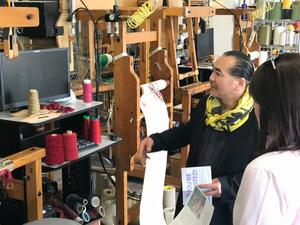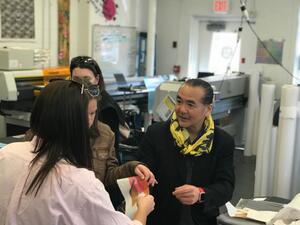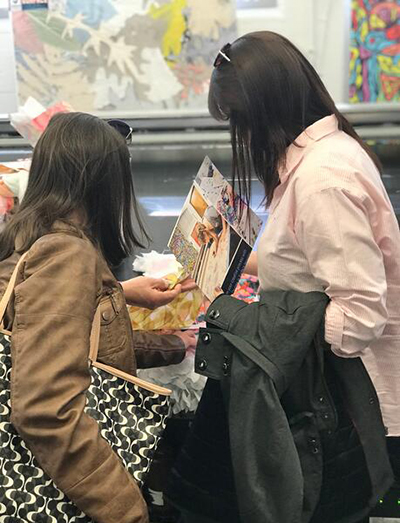Earlier this year, SGIA staff visited Thomas Jefferson University in Philadelphia to meet with Hitoshi Ujiie, the Director of the Center for Excellence in Surface Imaging, which is part of the Kanbar College of Design, Engineering and Commerce. We learned more about his program and how he’s preparing the future of the printing industry.
 How many students are in the Kanbar College of Design, Engineering and Commerce? Do they enroll from a wide geographic range?
How many students are in the Kanbar College of Design, Engineering and Commerce? Do they enroll from a wide geographic range?Ujiie: Thomas Jefferson has about 7,000 students. About 4,000 students are in the Jefferson East Fall campus (formerly Philadelphia University). Of those 4,000, 1,500 students [undergraduate and graduate] are in the Kanbar College. Our students are from all over the world, but of course, there are certain regions we target, like Northeast America.
What is essential for your students to know or understand before they leave your program and enter the workforce?
Ujiie: It’s important that — even if they might not have the access it to now — they have the techniques to be prepared for real-life applications. Ours is the only digital printing program of its kind and we’re showing them what they’re capable of and what imaging technology exists for graphic applications and printing on almost anything.
In a program like this, what is the final test, or project, that comprehensively shows what students have learned?
Ujiie: They practice new applications by finding materials at Home Depot or Lowe’s and applying images to different substrates, but what they’ve learned goes beyond how to use the printing technology. While each program in the Kanbar College has its own criteria, it’s all integrated in a way so that they understand the engineering side, the design side, the business side and all other aspects of the process.
 Their industry project tasks them to establish a business plan with their applications. They have to know how to speak and tell the story — what’s desirable in the industry now, and what’s actually feasible and viable. They must think in terms of the supply chain and workflow and how to solve the problem when the supply chain is broken.
Their industry project tasks them to establish a business plan with their applications. They have to know how to speak and tell the story — what’s desirable in the industry now, and what’s actually feasible and viable. They must think in terms of the supply chain and workflow and how to solve the problem when the supply chain is broken.
It’s important that they can do anything in the process, rather than be focused on one aspect.
Besides the technology they’re able to use, how are your students gaining industry exposure or real-world experience?
Ujiie: Since internships are not incorporated as part of the curriculum, we have industry companies — like Armstrong Flooring and Mimaki Engineering this past year — that sponsor these class projects, or provide outside internships for students.
We try to create opportunities that fit to everyone’s range of interests — some students are now designing, or work with print mills, textiles or wallpaper. Some have gone on to Armstrong, Lilly Pulitzer, Dreamscape and Mimaki Engineering. We’re firm believers that we have to take care of the future and ensure there are opportunities for them to pursue this industry.

See Hitoshi Ujiie at the 2018 SGIA Expo, where he’ll present Emerging New Field of Surface Imaging.
Learn more about his program and SGIA’s opportunities for students and educators.
*All photos are from SGIA's visit to Thomas Jefferson University, courtesy of Sidney Davis, Social Media Associate*






